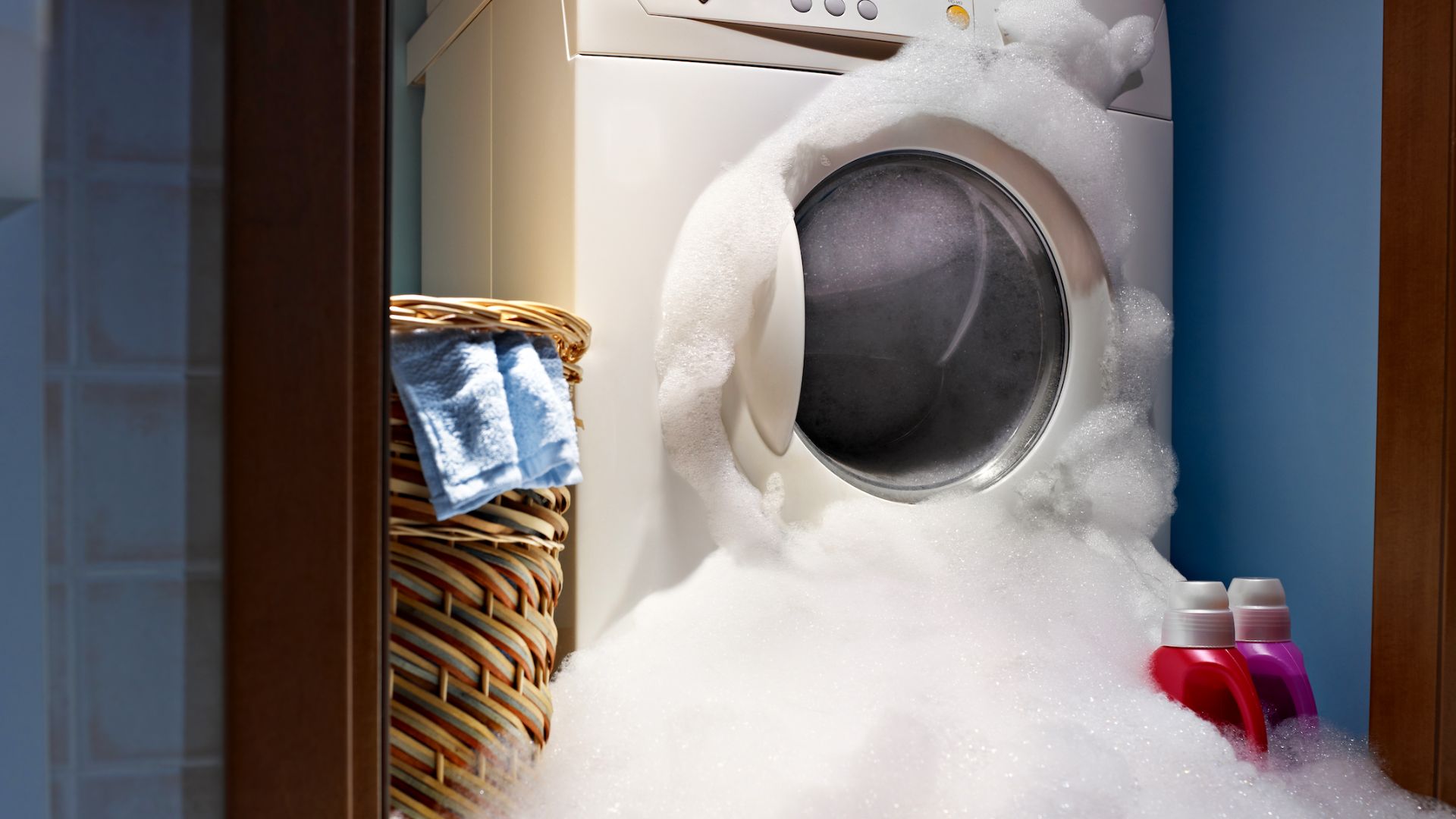7:00AM to 5:00PM
Like any other pipe or drain in your house, the washing machine drain is susceptible to overflow.
And trust us- walking into a laundry room with soapy water gushing out of your washing machines doesn’t make for a pleasant sight. An overflowing washing machine can damage your home’s foundation, and a washing machine overflows can also house harmful microorganisms. Didn’t expect a flooded area as part of your drain cycle?
So, how do you deal with a washing machine overflowing? Turn off the washing machine’s power supply and read on to find out the next step!

Before we jump in to give you the reasons behind and the solutions for an overflowing washing machine drain, let us quickly walk you through its mechanism.
At the end of each washing cycle, the machine will use a pump to move the dirty water into a flexible washing machine drain hose. This hose runs out of the machine and connects to the standpipe (washing machine drain pipe or washer drain) placed close to the hot or cold water supply valve.
When the washing machine hose functions correctly, the water flow will travel through it into the standpipe, from where it goes into the sewage drain line. However, clogs or blockages in the drain can cause it to overflow. Such clogs are generally caused by lint and debris getting stuck in the drain so the dirty water cannot pass through it.
In some cases, the water may even back up into a nearby laundry sink if the drain line is clogged. Ensuring that the washing machine drain pipe and drain line are clear and unobstructed is crucial to prevent any overflow issues.
You can conduct a few DIY checks to see how long the washing machine drain takes to overflow. This will, in turn, help you determine the location of the clog.
Switch on the machine to run a washing cycle and note the time it takes for the drain to fill up entirely and eventually overflow. You can then employ a suitable fix depending on this period, which may be:
If it takes the drain only a few seconds to overflow, then the blockage is likely small and located on its surface or the inside of the hose. And you can remove it using a drain snake.
Start by inserting the head of the snake into the hose and rotating the handle to extend it until you feel some resistance. This is the head coming in contact with the clog. You may have to adjust the position of the snake head so that it attaches itself to the clog.
Then, rotate the handle anti-clockwise to bring out the debris. Make sure you take time with this step, as going too fast can damage the pipe.
Once the head is completely retracted, clean it and repeat the steps to clean the standpipe. Finally, run a washing cycle to clean both the hose and standpipe- this should stop it from overflowing again.
A standpipe that takes 30 seconds to a minute to fill up has a clog located deep within, and eliminating this will require a longer drain snake, which professionals generally use. Besides, it may be difficult for first-timers, so consider calling a qualified plumber.
Standpipes that take more than one minute to fill are usually severely blocked and should only be treated by a professional. The clog can also be caused by faulty machine installation or problems with the main sewer line, which can be challenging to detect (and fix) the DIY way.
Note: Switch off the washing machine as soon as the standpipe overflows.

Chemical drain cleaners can be very effective in clearing blockages, provided you use the right one for the type of drain and clog. And always ensure that you use the cleaners per the manufacturer’s instructions.
Generally, most drain cleaners should be left inside the pipe for some time before being rinsed out. At the same time, the user needs to be careful with the application, as the chemicals can cause rashes, burns or even discomfort while breathing.
You can use home remedies to eliminate clogs, mainly because they are cheaper and can be performed using simple ingredients at home. However, they may not be as effective as a drain snake or drain cleaner. And the results may not be long-lasting, meaning you must repeat them regularly.
The soap and boiling water method is one of the most popular ways to break down clogs. Pour enough detergent and a little water into the hose or standpipe to form a soapy solution. Let this sit for some time before flushing it with boiling water several times.
Remember, this technique may not yield favourable results for clogs caused by hair or other solid foreign objects. In such cases, you can replace the soap with something more potent, like hydrogen peroxide and vinegar.
Alternatively, pouring plain hot water may be enough to dislodge clogs formed by soap or lint build-up.

Suppose the washing machine drain continues to overflow despite employing the fixes mentioned above. In that case, the culprit may be an oversized pipe, a water inlet valve, a water level switch, a control panel and pressure switch, or damaged water supply hoses. And getting them replaced is a job best left to professionals. Get in touch with us for your washing machine overflow! Whether it’s a clog in your washing machine in your pipes or something else causing you trouble in your machine and plumbing system, you can rely on our fully licensed Gold Coast plumbers to provide cost-effective solutions. Call us today! Nobody likes their washing machine overflowing, so let’s stop it immediately.
In any case, it’s always advisable to take adequate steps to prevent clogs, which include using lint bags while washing and keeping at least ½-inch of space between the hose and drain. It would be best if you also opted for detergents formulated to reduce soap residue. Until next time, happy washing!